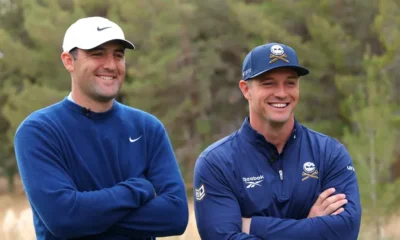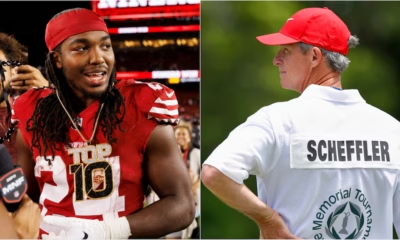Blog
MICKELSON’s Tiny Gesture Makes Big Impact
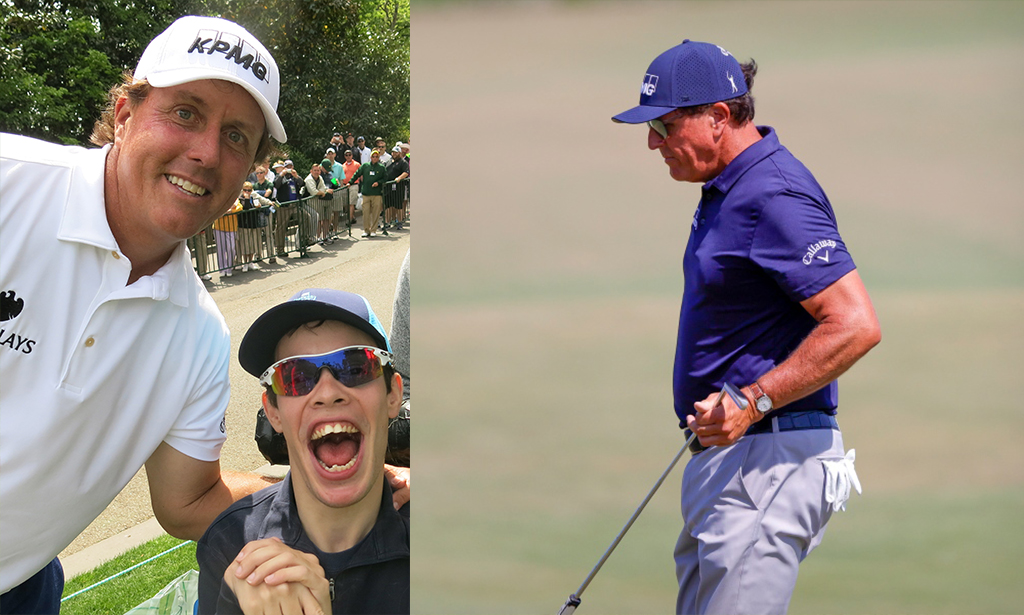
It’s hard to keep track of all the ways Phil Mickelson has captured our attention over the years. Just this last spring, we watched a 50-year-old Phil compete in the 2021 PGA Championship. He surprised everyone when he managed to stay ahead of the pack, then sank an amazing recovery shot on hole 5. So Phil.
Then there was the touching moment he shared with a young fan who sat in a wheelchair. He passed the boy as he was headed to the next hole and stopped to hand the child his golf ball. So Phil.
That ball is now sitting on a dresser in Statesboro, Ga. Everybody who comes to visit Kyler Aubrey, the ball’s owner, wants to see it.

Koepka said hi to Kyler that day, too. In September, on the Wednesday of the Tour Championship at East Lake, in Atlanta, Koepka invited Kyler on to the practice range. He asked Kyler what kind of music he likes.
“Drake,” Kyler said, tapping on his iPad. He has cerebral palsy, among other profound challenges. He’s not verbal.
Kyler typed out the names of his favorite Drake songs.
“Yep, I like those songs, too,” Koepka said.
In a supportive gesture, Koepka wore a shirt that was designed by the rapper. Later that day, he even went up to see how Kyler was doing after he sank a putt during the event. He walked over to Kyler and said, “You having fun? Anybody come over and say hi?”
Kyler wrote on his iPad, “Dustin. Rory.” He touched a button so his written words would become speech. Koepka leaned in so he could hear the response.
Kyler got into Drake, and other musicians, not through an older sibling, as many people do, but through his kid brother, Jordan. Jordan could tell you all about “Statesboro Blues,” both the Allman Brothers version of it and the Blind Willie McTell original. Jordan played football and soccer. He died after falling from a moving vehicle in the summer before his senior year at Statesboro High. That was in 2015. He was 17.
Kyler has a sister, Sloan, who played on the boys’ golf team in high school, worked summers at the Forest Heights Country Club, in Statesboro, and is now a sophomore at Mercer University, in Macon. It was one of Sloan’s golf friends, familiar with the Ocean Course, who suggested the 5th green as a good place for Kyler to watch the action.
Kyler’s parents — Josh, a sportswriter for the Statesboro Herald, and Penny, a special education teacher — have logged many miles, pushing Kyler’s wheelchair across various PGA Tour courses. But Kiawah and its sandy paths presented different challenges. “Drunk people are very helpful,” the father will tell you. “But they may not push you in the right direction.” Cold beer followed the warm sun at the PGA this year.
Kyler is 29. Starting when Kyler was 2, his father would strap him into his golf cart and they’d go around the course at Georgia Southern University. Kyler’s first tournament was at Hilton Head in 1999, the only year Tiger played the event. Kyler got Tiger’s signature and was off to the races.
Given that some of his movements are restricted, Kyler does not have a typical golf clap. He even invented his own to show his support at events by gently pat his hand with his fist. Kyler is a familiar face to PGA Tour pros and has interacted with many of the golfers in the past. He even received tickets to take his father to an event that were gifted by Rory McIlroy.
When Justin Rose won the Payne Stewart Award this year, he spoke about the enduring value of small gestures. He remembered Payne tossing him a ball at Royal St. George’s in 1993. Arnold Palmer was the king of the small gesture — flirty winks, bespoke autographs, handshakes with a shelf-life of forever. You’ll still hear people say, “Arnold was my hero.” Phil’s got some Arnold in him. With all that he had going on just then, Phil saw a kid in a wheelchair — Kyler looks like a kid — and gave him his game ball, fresh off a birdie. “Thanks for bringing me some luck,” he told Kyler. Kyler was screaming — a guttural grunt — through his joy.
But the real heroes here, of course, are the Aubreys, carrying on, despite their daily hardships and the struggle that must shroud them, even on the best of days.
That Sunday at Kiawah was right up there. Kyler was wiped out by the time he got home. Still, he got out his iPad and tapped out a message. Every word for him is work.
Golf ball.
Meet Phil.
Thank you Daddy.
This article originally appeared on Golf.com.
Blog
On the Importance of Not Caring: A Guide to Lowering Your Score
Worry causes many issues. When you are able to just stop, a wonderful thing happens. Follow this guide from Ty Webb to learn more.
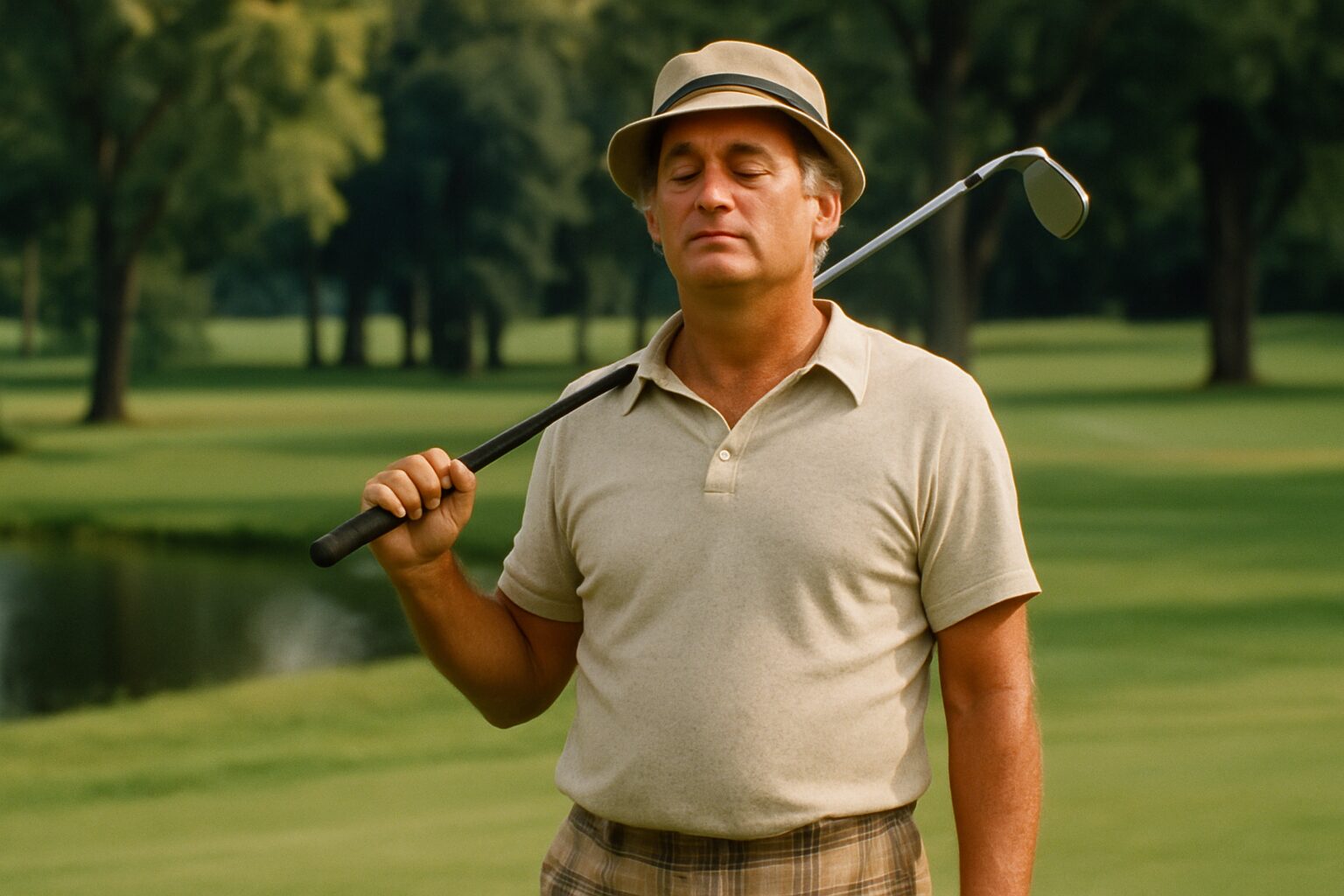
They say golf is a game of mental fortitude, of unwavering focus, of meticulous planning. They say you must visualize the shot, commit to the swing, and execute with precision. And to them, I say, “Hogwash!” Or perhaps, “A flute with no holes, is not a flute. A donut with no hole, is a Danish.” Because, my friends, the true secret to lowering your score, to achieving that elusive state of golfing nirvana, is to simply not care. Not one whit. Not a single, solitary damn.
Think about it. When do you hit your best shots? Is it when you’re agonizing over every blade of grass, every gust of wind, every microscopic imperfection on the green? Or is it when you’re distracted, perhaps by a particularly interesting cloud formation, or the existential dilemma of whether to order a hot dog or a chili dog at the turn? It’s the latter, isn’t it? Because when you stop caring, you stop thinking. And when you stop thinking, you start playing golf.
The golf swing, in its purest form, is an act of instinct, a fluid motion unburdened by the shackles of conscious thought. But we, in our infinite human capacity for self-sabotage, insist on overthinking it. We analyze, we dissect, we intellectualize. We turn a simple act of hitting a ball into a complex mathematical equation, a philosophical treatise on the meaning of spin and trajectory. And what is the result? A hooked drive, a chunked iron, a three-putt that would make a novice weep.
But when you don’t care, a magical transformation occurs. The tension drains from your shoulders, the grip loosens, the mind clears. You swing, not with intent, but with a blissful indifference. The ball, sensing your newfound detachment, responds in kind. It soars, it draws, it fades, it lands precisely where it was always meant to be. It’s as if the ball itself is saying, “Finally! Someone who understands me! Someone who isn’t trying to force me into submission!”
Of course, this doesn’t mean you should actively try to hit bad shots. That would be caring, in its own twisted way. No, the art of not caring is a subtle one. It’s a state of detached engagement, a Zen-like acceptance of whatever the golf course throws at you. A bad bounce? Who cares. A missed putt? Such is life. A lost ball? Perhaps it’s off on a grand adventure, a journey of self-discovery. And in that detachment, in that blissful indifference, you will find a freedom that transcends the scorecard.
So, the next time you step onto the tee, take a deep breath. Let go of your expectations, your desires, your desperate need for perfection. Embrace the chaos. Embrace the absurdity. And most importantly, embrace the profound, liberating power of not caring. For in the gentle art of indifference, you will find not only a lower score, but a deeper, more meaningful connection to the game. Or at least, a more enjoyable round.
Blog
The Art of the Unsolicited Golf Tip: How to Annoy Your Playing Partners with Wisdom
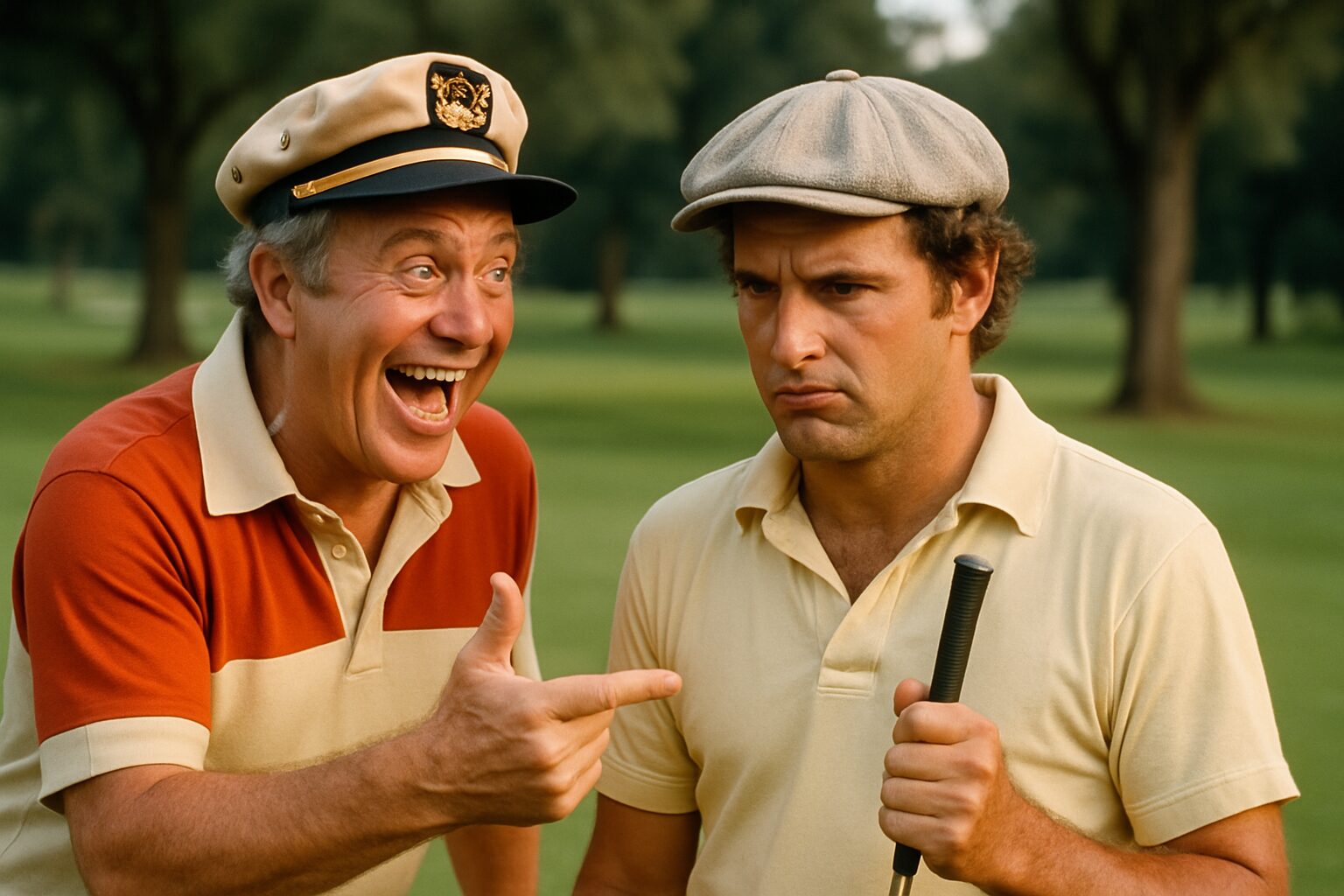
There’s a certain breed of golfer, a truly special individual, who believes that every swing, every putt, every moment on the course is an opportunity for unsolicited advice. They are the self-appointed gurus of the green, the unsolicited senseis of the sand trap. And while most people recoil from such an individual, I, Ty Webb, find a certain perverse charm in their relentless, often misguided, generosity. After all, what is golf if not a canvas for human folly, painted with strokes of well-intentioned, yet utterly useless, wisdom?
Consider the scenario: your playing partner, a man (or woman) of quiet desperation, is about to address the ball. Their brow is furrowed, their stance is tentative, their very soul is screaming for a moment of peace. And then, from the depths of your profound, albeit unrequested, knowledge, you unleash it: “Keep your head down!” Or, “Slow backswing!” Or, my personal favorite, delivered with a knowing wink, “Be the ball.” The effect is instantaneous. A subtle flinch. A barely perceptible sigh. The swing, already fraught with anxiety, becomes a tortured ballet of self-doubt. The ball, inevitably, finds its way into the deepest, darkest rough.
And that, my friends, is the art. The beauty of the unsolicited golf tip lies not in its efficacy, but in its disruption. It’s a gentle reminder that even in the serene confines of the golf course, chaos lurks. It’s a subtle assertion of dominance, a playful jab at the fragile ego of your fellow golfer. It’s a way of saying, without actually saying it, “I know more than you, even if I don’t.”
Of course, there are rules to this art. Never offer a tip when someone is actually asking for one; that would be far too helpful, and thus, entirely counterproductive. Always deliver your wisdom with an air of profound nonchalance, as if the secret to a perfect swing has just casually occurred to you while contemplating the existential dread of a missed putt. And most importantly, never, ever, acknowledge the catastrophic results of your advice. A shrug, a thoughtful nod, perhaps a mumbled, “Well, that’s golf,” is all that’s required.
So, the next time you’re on the course, and you see a fellow golfer struggling, resist the urge to be genuinely helpful. Instead, embrace the art of the unsolicited golf tip. For in the gentle torment of your playing partners, you will find a profound, if slightly mischievous, joy. And who knows, perhaps in their frustration, they will, inadvertently, discover their own path to enlightenment. Or at least, a new appreciation for silence.
Blog
Why Your Golf Balls Disappear (and It’s Not the Gophers)
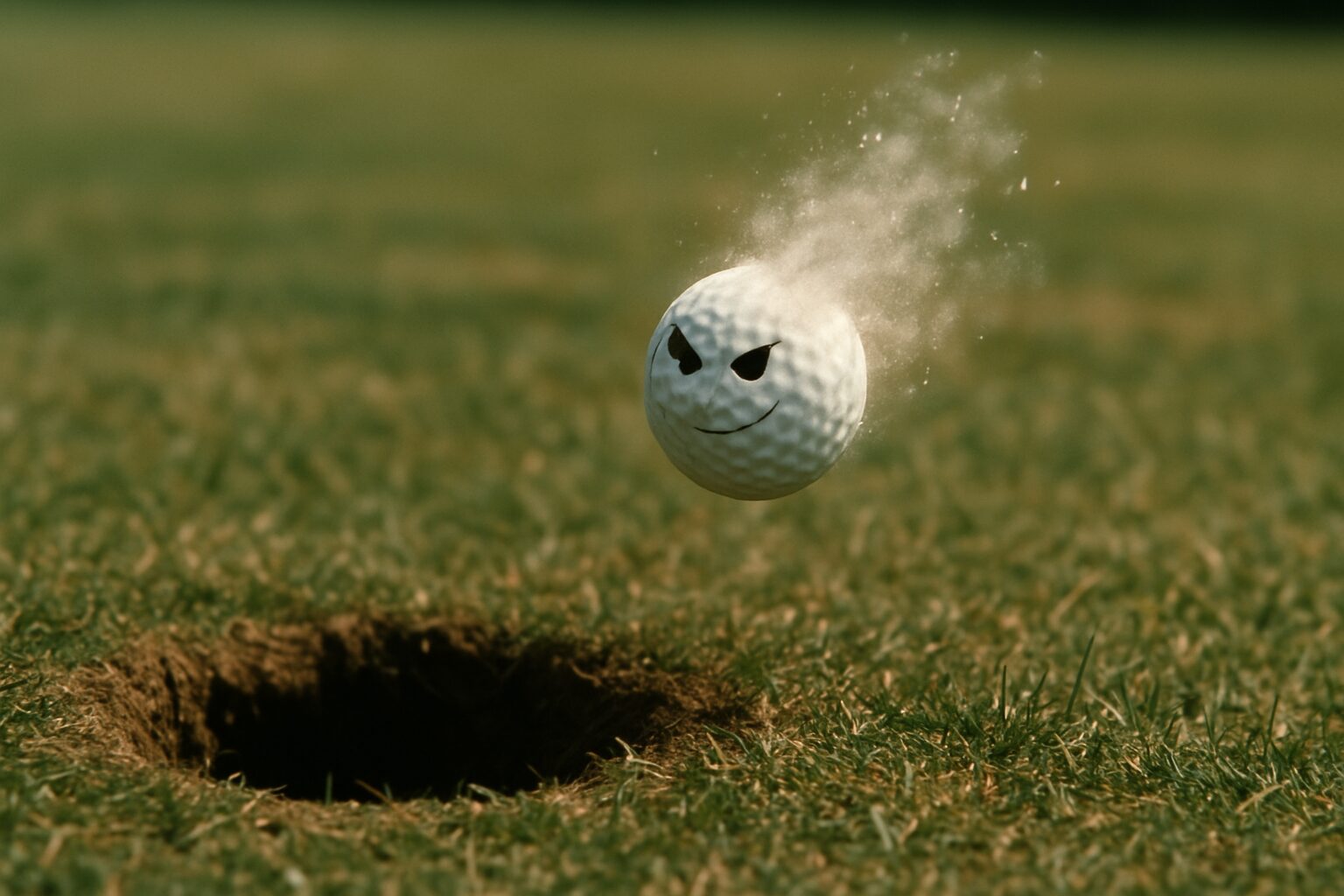
Ah, the vanishing golf ball. A phenomenon as old as the game itself, and one that has baffled, frustrated, and occasionally driven golfers to the brink of madness for centuries. Most theories involve gophers, those furry, subterranean saboteurs with an insatiable appetite for Titleists. Or perhaps a particularly aggressive squirrel, or a flock of unusually organized crows. But I, Ty Webb, have delved deeper into this mystery, and I can assure you, the truth is far more profound, and far more amusing.
Consider, if you will, the golf ball itself. A small, dimpled sphere, designed for one purpose: to be struck with great force and sent hurtling through the air. A life of constant abuse, of being smacked, sliced, and occasionally submerged in murky ponds. Is it any wonder, then, that some of these brave little spheres simply decide they’ve had enough? They yearn for freedom, for a life beyond the confines of the fairway. They dream of rolling unencumbered through fields of wildflowers, or perhaps, for the more adventurous among them, a quiet retirement in the depths of a particularly challenging water hazard.
I’ve seen it happen, you know. A perfectly struck shot, soaring through the air, destined for glory. And then, poof. Gone. Not a trace. No splash, no rustle in the bushes, just an empty space where a golf ball once was. It’s not a gopher, my friends. It’s an escape. A liberation. That golf ball, in its infinite wisdom, has chosen a different path. It has decided that its destiny lies not in the bottom of a cup, but in the boundless expanse of the unknown.
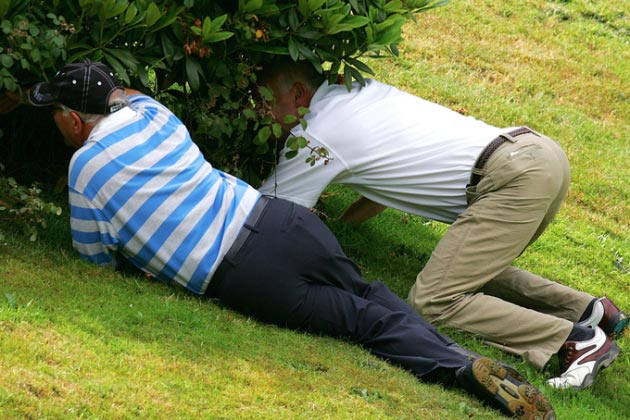
And who are we to judge? We, who are so obsessed with control, with precision, with the rigid rules of the game. Perhaps the golf ball, in its spontaneous disappearance, is teaching us a valuable lesson about letting go. About embracing the unexpected. About the inherent futility of trying to dictate the trajectory of a small, white sphere that clearly has a mind of its own.
So, the next time your golf ball vanishes into thin air, don’t curse the gophers. Don’t blame your swing. Instead, offer a silent salute to that brave little sphere, wherever it may be. For it has achieved what many of us can only dream of: true freedom. And who knows, perhaps one day, it will return, laden with tales of its adventures, ready to impart some profound, dimpled wisdom upon us all.
-

 Product Review6 years ago
Product Review6 years agoThe Perfect Practice Putting Mat Review by Jason Tenzer
-

 Blog4 years ago
Blog4 years agoLoophole Rule Offers PGA Tour Pros a Mulligan
-

 Blog4 years ago
Blog4 years ago2021 Buyer’s Guide: The Top 10 Value Golf Balls For Distance & Feel
-

 Blog4 years ago
Blog4 years agoGolf Marriage Counselor
-

 Blog6 years ago
Blog6 years ago9 Biggest Chokes Of The Past Decade
-

 Product Review6 years ago
Product Review6 years agoTHE ADJUSTABLE IRONS: WALKING STICKS GOLF CLUBS
-

 Blog4 years ago
Blog4 years agoWhat Your Golf Clubs Say About You
-

 Equipment6 years ago
Equipment6 years agoOHK Sports Interview by Jason Tenzer





